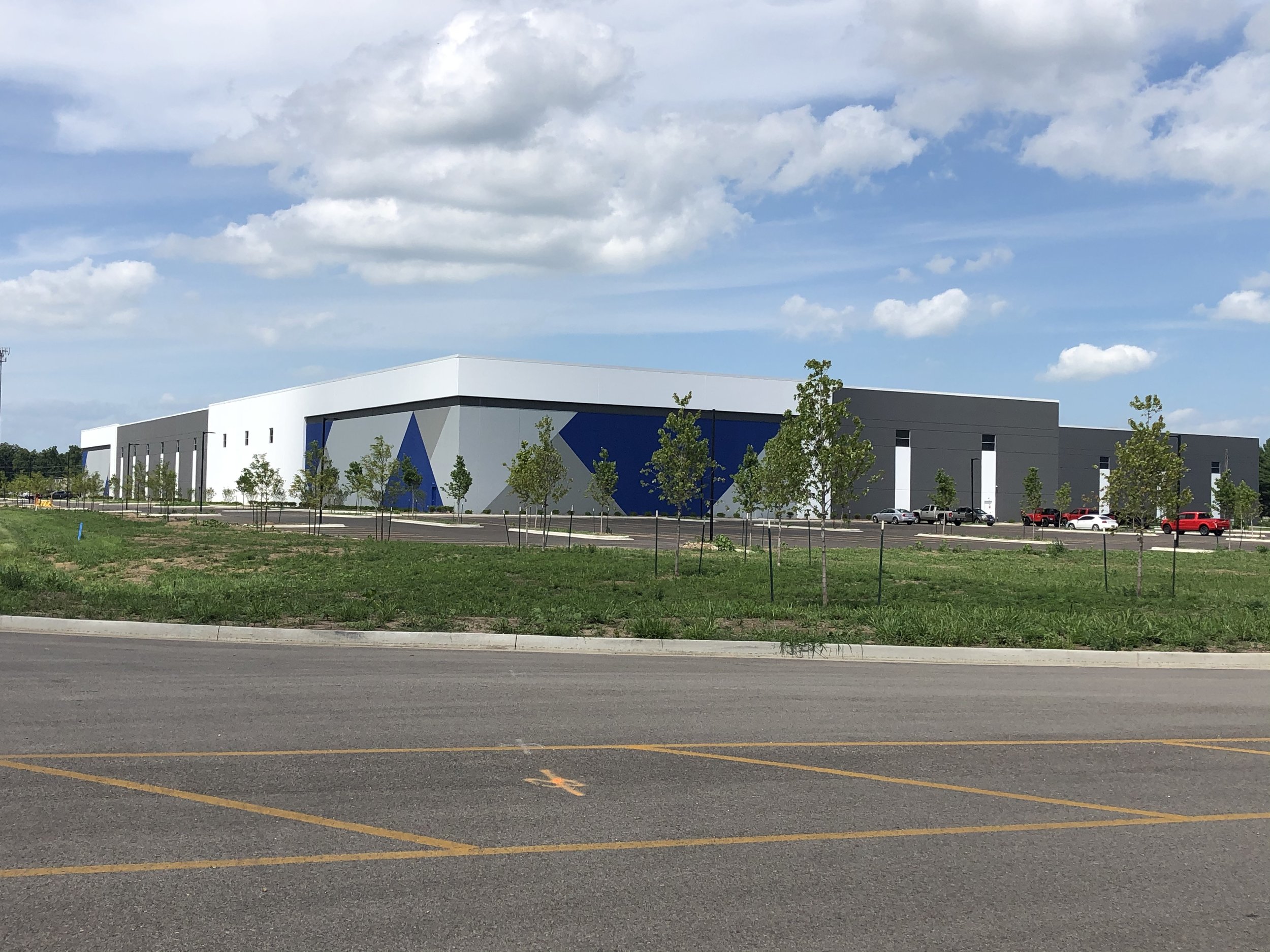In Part 2 of this episode of Precast Chalk Talk, Mid-States Concrete President Hagen Harker speaks with two of our four summer interns about their focuses this summer and what they are learning.
Check it out >>
Find every episode of Precast Chalk Talk >>
Precast Chalk Talk: Episode 35-1
In Part 1 of this episode of Precast Chalk Talk, Mid-States Concrete President Hagen Harker speaks with two of our four summer interns about their focuses this summer and what they are learning.
Check it out >>
Find every episode of Precast Chalk Talk >>
Precast Wall Panels Help With Interesting Design
When Winter Construction began working on an expansion at HALO Branded Solutions in Sterling, Illinois, they were hoping to do something interesting with the exterior design.
”The precast kind of gave us an opportunity to paint what we wanted to - a unique, branded color pattern,” said Scott Winter, Vice President Design/Build Services for Winter Construction. “The way it looked was pretty important to (the customer) and concrete wall panels can help achieve that. We did some kind of overlay panels, veneer type panels to create some geometries like the top white (area) that kind of sticks out.”
Precast wall panels were selected for the $26 million 175,000-square-foot Halo Phase II Expansion project because it was a pretty high volume warehouse. Panels were 45+ feet tall. The customer wanted tall, clear height, and they wanted it to go up fast.
”Speed of construction on the ground was pretty important,” Winter said. “There’s always a lead time in getting wall panels produced, but they go up on the site extremely quickly and when you’re trying to coordinate lots of other trades, getting the shell up quickly is pretty impactful on the overall schedule.”
Due to the design standards of the Sterling business park where HALO is located, Winter’s choice was between precast wall panels and insulated metal panels with a smooth finish. Using precast did offer some cost savings in terms of on site supervision and delivery.
”If you can have the shell of a building in a matter of weeks, and the quality control is fairly consistent so there’s not a lot of time reworking things or things coming out damaged, it’s easier to plan for,” Winter said.
Mid-States Concrete provided 185 wall panels for the project, totaling roughly 92,900-square-feet. Winter Construction is often involved in design/build projects, so they try to bring the precaster in early to help with preconstruction detailing. Winter values his partnership with Mid-States, as it allows the whole team to work toward the completion deadline together.
”What’s really critical for us, especially in current times where resources are scarce and lead times are issues with different product types, precast is still something that’s fairly easy to get and it really condenses onsite schedule, which owners want,” Winter said. “Start to finish in faster times than ever so they can get their products to market. We can do our job planning ahead with precast because of the speed of construction.”
Precast Chalk Talk: Episode 34
In this episode of Precast Chalk Talk, President Hagen Harker explores reasons we would fill a core in our hollow core slabs.
Precast Wall Panels Part of Blast Resistant Facilities: Part 2
Precast Wall Panels Meet Blast Wall Requirements
When Grain Processing Corporation in Muscatine, Iowa needed to replace its distillery control room from the 1960s, one of the requirements was that the room needed to meet blast wall requirements.
Grain Processing Corporation manufactures, distributes, and markets multiple products, mainly derived from corn.
According to Ken Gilkerson, Project Engineer with Grain Processing Corporation, the only two options for meeting the blast wall requirements were precast concrete or CMU.
”When you are doing a control room and you don’t have a lot of penetrations through the walls, it’s a no-brainer to do precast walls,” Gilkerson said. “You get them on a truck, they set them in a week, and they are done.”
Mid-States Concrete provided 23 Wall Panels for the control room project, or roughly 5,755 square feet.
The control room is where the people running the distillery process sit and control it. It’s a two-story building with motor control electricity on the second floor.
”The main thing is, with the blast ratings we have now, the operators can be close to the process in a safe way,” Gilkerson said. “In the past, they had to be farther away because there was no blast rating. It is also larger, so all the operators are in one room so they communicate easier.”
When considering CMU versus precast, Gilkerson found significant savings as he estimates CMU would have taken a team of five roughly two months to complete, with a crane on site every day. Using precast concrete helped Gilkerson take the walls out of the critical path of the schedule.
”You don’t have to deal with mortar mixers and masons all over your project for a month when you can be done in a week,” he said. “We always start with precast panels first when we are designing a project and if we can’t make precast work, in terms of schedule, then we go to CMU.”






